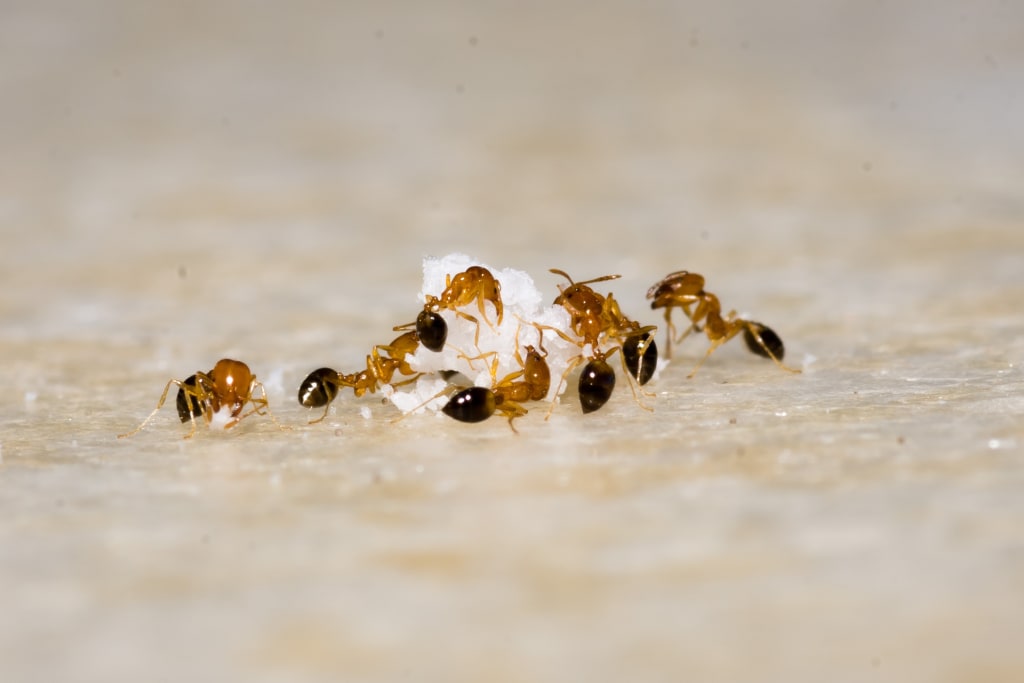Unveiling the Fascinating World of Ants
10 Astonishing Facts

Ants, often overlooked in their small stature, are marvels of nature with an array of captivating behaviors and abilities. Delve into the extraordinary world of ants and discover ten astonishing facts that showcase their ingenuity, resilience, and intriguing social structures.
10. Stitching Wounds with Army Ants
In the vast African Savannah, where medical assistance is a distant luxury, the Masai Tribe found a remarkable first aid solution — the mighty pincers of army ants. When a warrior sustains a wound, they gather large army ants, allowing them to bite both sides of the wound. The warrior then breaks off the ant's body, leaving only the head. The resulting makeshift surgical staples create a seal that lasts for days, offering a crucial on-the-go remedy.
9. Ants: Ancient Inhabitants of Earth
Ants boast an impressive tenure on Earth, dating back to the Cretaceous Period, a staggering 110 to 130 million years ago. In comparison, humans emerged a mere five million years ago. This vast age gap emphasizes the resilience and social evolution of ants, positioning them as ancient inhabitants that have witnessed the eons unfold.
8. Ant Undertakers and Dead Disposal
Ants exhibit a unique respect for their deceased comrades, a behavior shared with only a few species, including humans and elephants. Ant colonies have designated undertakers responsible for carrying dead ants outside the nest to prevent the spread of infection. This meticulous approach to sanitation highlights the intricate social structure within ant colonies.
7. Parthenogenesis: Ants' Cloning Abilities
Certain Amazonian ants showcase a fascinating reproductive strategy called parthenogenesis. This asexual reproduction results in the birth of clones, creating colonies devoid of males. Even male small fire ants engage in a form of self-cloning by eliminating the female genome in fertilized eggs, producing ants that are perfect clones of the father. This intricate reproductive dance contributes to nests with diverse genetic compositions.
6. Tandem-Running Ant Teachers
Ants display an advanced form of teaching within their colonies. Worker ants, assigned specific roles, are not born with pre-programmed skills. Instead, they learn through tandem-running, a unique teaching style where an experienced ant runs with a novice, imparting essential skills. This two-way interaction in non-human animal teaching underscores the complexity of ant societies.
5. Ant Agriculture: Masters of Farming
Ants stand among a select group of creatures, including humans, utilizing agriculture for survival. Remarkably, ants began farming approximately 50 million years ago. Attine ants, for example, cultivate fungi, adopting sophisticated farming techniques. The parallels between ant and human agriculture highlight the ingenious ways ants secure their sustenance.
4. Ant Herbicides and Antibiotics
In their fungal gardens, ants employ eco-friendly pest control methods. They produce antibiotics to combat virulent fungi threatening their crops. Wood ants incorporate solidified conifer resins in nest building, acting as a natural herbicide. Lemon ants, nesting in trees, produce a herbicide that swiftly kills surrounding plants, showcasing the intricate ways ants manage their environments.
3. Ants as Livestock Keepers
Ants not only cultivate crops but also raise livestock, demonstrating an astonishing level of sophistication. Certain ant species herd aphids, mealybugs, and caterpillars that secrete honeydew. Ants safeguard their "livestock" from predators, actively moving them between feeding locations. The act of "milking" these insects for honeydew draws intriguing parallels with human livestock management.
2. Ant Warfare: Strategies and Tactics
Ants engage in warfare with tactics reminiscent of human battles. They employ propaganda pheromones to confuse enemies, inducing infighting. Some ant species, like the Amazon ants, closely resemble historical Spartans in their warrior lifestyle, relying on war to replenish slaves and acquire resources. The complexity of ant warfare mirrors aspects of human conflict.
1. Ant Slavery: A Dark Reality
Surprisingly, certain ant species practice slavery, relying on captured pupae to serve as their workforce. Polyergus breviceps, a U.S. native species, exhibits an extraordinary dependence on slave labor. Warrior ants raid nests, releasing formic acid to subdue defenders. The invading queen releases pheromones to pacify the conquered colony, ultimately becoming their new ruler. Strikingly, enslaved ants occasionally rebel, challenging the hierarchy imposed by their enslavers.
In conclusion, ants emerge as intricate beings, defying their diminutive size with a tapestry of astonishing behaviors. From battlefield strategies to farming techniques, ants offer a captivating glimpse into the complexity of their societies. These resilient insects, often underestimated, weave a fascinating narrative of survival, adaptation, and cooperation in the intricate tapestry of the natural world.
About the Creator
Līva
World is interesting place. Scary, but worth living.
Nature is full of surprises and people are... well, people are something else.
Art is the best doctor.
Enjoyed the story? Support the Creator.
Subscribe for free to receive all their stories in your feed. You could also pledge your support or give them a one-off tip, letting them know you appreciate their work.





Comments
There are no comments for this story
Be the first to respond and start the conversation.